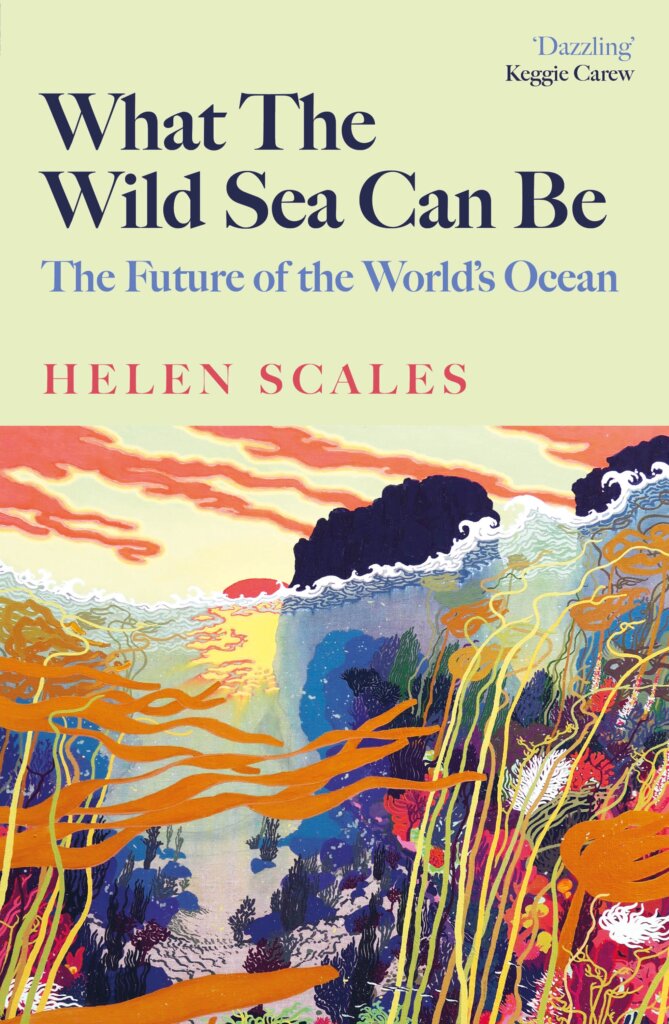
Reviewed by Jonathan Wallace.
Seen from space we are the Blue Planet. About 70% of the planet’s surface is covered by oceans and these waters are fundamental to life on Earth. The oceans were the cradle in which life began and they remain the home for vast numbers of species. They are also vital to humanity: every single person on Earth from the storm-tossed mariner to the most land-locked farmer is affected by what happens in the oceans and by the changes that we know are occurring within them. The vastness of the oceans has led us into a false belief that they are inexhaustible both in terms of the resources we can plunder from them and in the volumes of our wastes that they can swallow up. We have come to understand that this is far from the truth and in her latest book Helen Scales outlines the scale of the problems we have created and some of the ways in which conservationists and marine scientists are attempting to redress the balance.
Scales writes with verve and her love and knowledge of the marine environment shine through when she describes the extravagant beauty and diversity of life on the world’s coral reefs, kelp forests and seagrass meadows. The descriptions of the pressures on these and other marine habitats make for grim reading, though, and it is hard to remain optimistic in the face of the powerful vested interests that see only financial opportunity in the oceans and show little interest in reining in their activities. We read of the development of an industrial krill fishery, for example, that threatens the various Antarctic species for whom krill is a vital food resource. The catch from this fishery is processed into food for farmed fish, where it contributes to other problems in the marine environment perhaps thousands of miles from where the krill was caught.
Scales does, however, find some grounds for cautious optimism in the actions that are increasingly being taken to try to protect the seas and the life within them. These include the establishment of marine reserves from the enormous Papahānaumokuākea Marine National Monument around the north-western Hawaiian Islands to the Lamlash Bay No Take Zone off the island of Arran in the Firth of Clyde where previously devastated marine communities have recovered to the benefit of, amongst others, fishermen operating beyond the limits of the reserve. They also include hands-on efforts to re-establish damaged coral reefs and kelp beds, though there may be significant challenges in scaling some of these up. Perhaps most importantly she describes how attitudes may be shifting towards the seas both at the level of citizen-consumers and at the level of the governments and international bodies who decide how the ocean’s resources should be regulated.
What the Wild Seas Can Be is a very readable account that should help to push this shift in attitudes and it could be usefully read by the politicians and other decision makers whose policies will affect the seas in years to come. It should certainly be of interest to readers of this blog.
What the Wild Sea Can Be: the future of the World’s Ocean by Helen Scales is published by Grove Press.
Mark Avery adds: Thank you! Jonathan, for this review. It sounds like a good book and I do like the cover. I’d give the cover 9/10.
[registration_form]